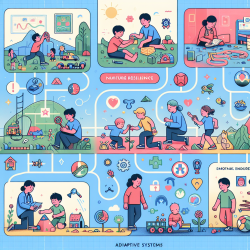Introduction
Adolescent health is a crucial component of global health, especially in the context of the Sustainable Development Goals (SDGs). The research article titled "Adolescent health in the Sustainable Development Goal era: are we aligned for multisectoral action?" provides a comprehensive analysis of how various sectors can collaborate to improve adolescent health outcomes. This blog will explore how practitioners can leverage these insights to enhance their practice and encourage further research.
Understanding Multisectoral Collaboration
The research highlights that adolescent health interventions are often spread across multiple sectors. Out of 11 intervention areas, the health sector is the lead actor in only one. This underscores the importance of multisectoral collaboration. Practitioners should understand the roles of different sectors and how they can work together to achieve common goals.
Key Insights for Practitioners
- Governance Approaches: Effective governance is crucial for brokering relationships and interactions among sectors. Practitioners should focus on understanding the political context and fostering collaboration.
- Contextual Understanding: Practitioners need to map out the sectors involved and understand their power dynamics. This understanding will help in aligning goals and creating effective interventions.
- Triggers for Change: Identifying and leveraging triggers or windows of opportunity can catalyze change. Practitioners should be vigilant for such opportunities to promote multisectoral action.
- Capacity Building: Building capacities within and across sectors is essential. This includes human resources, management structures, and platforms for implementation.
- Relationship Building: Building trust and respect among sectors is vital. Practitioners should focus on creating strong relationships to navigate the complexities of multisectoral collaboration.
Encouraging Further Research
While the research provides valuable insights, there is a need for further exploration into the political ecosystems and power relations that influence multisectoral collaboration. Practitioners are encouraged to engage in research that maps stakeholders, identifies champions, and reviews governance typologies. This will enhance the understanding of how different sectors can effectively collaborate for adolescent health.
Conclusion
Multisectoral collaboration is essential for improving adolescent health outcomes. Practitioners can play a pivotal role by understanding governance approaches, building capacities, and fostering relationships across sectors. By leveraging the insights from the research, practitioners can contribute to the achievement of the SDGs and create better health outcomes for adolescents.
To read the original research paper, please follow this link: Adolescent health in the Sustainable Development Goal era: are we aligned for multisectoral action?










